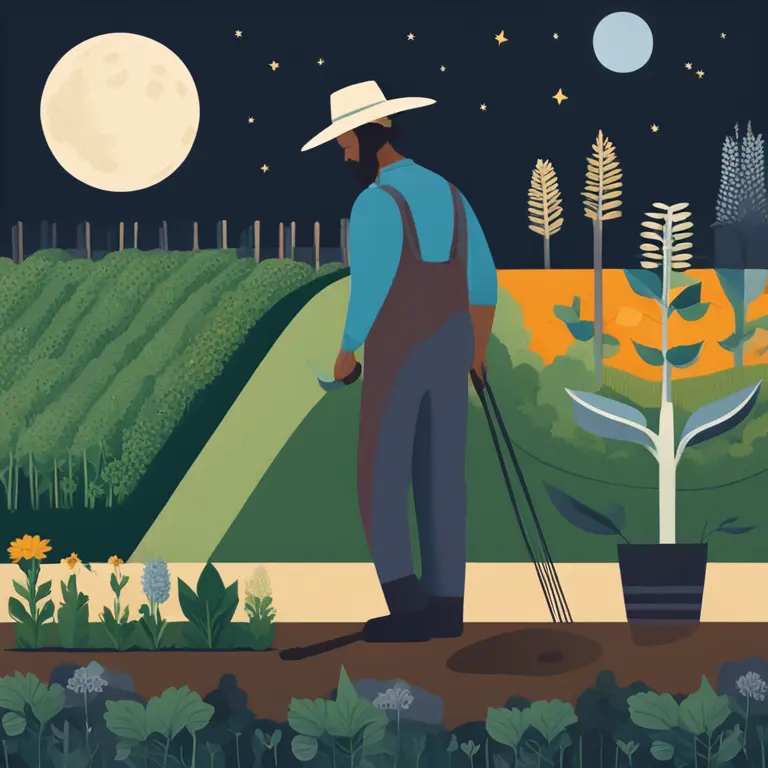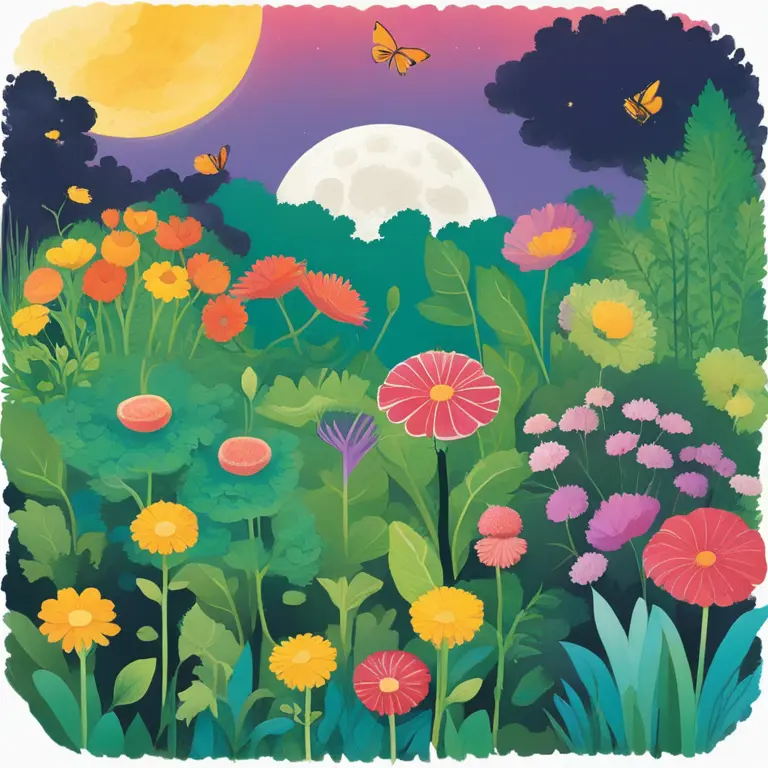
Moon Phase Gardening: Timing Your Seed Planting
Learn how the lunar cycle influences seed planting for a flourishing garden, informed by the wisdom of astrology.
article by Priya Deshmukh
Intertwining Moon Cycles and Agriculture
The ancient practice of aligning agricultural activities with the moon's phases is a time-honored tradition, upheld by generations of farmers and gardeners. This method, often referred to as "Moon Phase Gardening," suggests that the lunar cycle can influence plant growth and vitality. The celestial dance between the Earth and its lone satellite is believed to affect moisture levels in the soil, which directly impacts the success of seed germination and plant development. By understanding and adhering to lunar rhythms, you may harness these natural forces to cultivate a more bountiful and resilient garden.

New Moon: Initiating Growth
The New Moon marks the beginning of the lunar cycle, symbolizing new beginnings. Gardening by the moon dictates that this is a prime time to plant seeds that require good root development. As the moon's light increases, so does the gravitational pull, which can lead to a rise in moisture in the soil, creating more favorable conditions for those seeds that need extra hydration to swell and break through their shells. Vegetables such as carrots, beets, and radishes are typical candidates for planting during the waxing moon that follows the New Moon phase.

First Quarter Moon: Building Momentum
As the moon waxes toward the First Quarter, the increasing light and gravitational pull offer optimal conditions for growth above the soil. During this phase, it's advised to focus on planting seeds that produce their fruit above ground and have external seeds, such as lettuce, spinach, and broccoli. The theory posits that as the moonlight grows, so will the leafy parts of these plants, ideally leading to lush, vibrant growth in the weeks to follow.

Full Moon: Peak Fertility
The Full Moon is considered a period of peak fertility, with heightened gravitational pull and moonlight. For moon phase gardeners, this phase represents an opportune moment to sow or transplant fruiting and flowering plants, especially those with internal seeds. Tomatoes, peppers, and squashes are prime examples. These plants are believed to benefit from the stabilizing influence of the full moon, setting the stage for a potential harvest that is abundant in both yield and quality.

Last Quarter Moon: Winding Down
As the moon wanes in the Last Quarter phase, the light decreases, and the gravitational pull begins to lessen. Conventional moon phase gardening wisdom suggests this is a period more suitable for perennials and biennials, planting bulbs, and setting up rootstocks. It is also a time for maintenance rather than new beginnings, which includes harvesting, pruning, and transplanting, rather than sowing new seeds, as the decreasing moonlight is not seen as conducive to seed germination.
Combining Science with Tradition
While the scientific community remains divided over the empirical efficacy of moon phase gardening, proponents point to anecdotal evidence and long-standing traditional practices. Modern-day enthusiasts incorporate ancient wisdom with contemporary horticultural science, creating a unique fusion of natural intuition and tangible expertise. Whether or not one subscribes to its principles, aligning planting schedules with the moon's phases encourages gardeners to adopt a more structured and observant approach to their craft, potentially leading to deeper connections with the cycles of nature.
Published: 1/19/2024
Modified: 1/19/2024
More predictions
Come back here soon to learn more about yourself and your future


Moon Phases: A Celestial Cycle Explored
Delve into the cyclical journey of the Moon, understand its phases, and explore their significance in astrology and personal insight.


Behind The Moon Phases Mystique
Delve into the celestial mechanics behind the moon phases and their significance in astrological practices.


Best Moon Phases for Optimal Fishing Success
Discover the optimal moon phases for fishing and how they influence fish behavior, enhancing your chances for a successful catch.